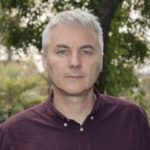Link to Pubmed [PMID] – 26125189
PLoS Negl Trop Dis 2015;9(6):e0003872
Plasmodium vivax is the geographically most widespread human malaria parasite. To analyze patterns of microsatellite diversity and population structure across countries of different transmission intensity, genotyping data from 11 microsatellite markers was either generated or compiled from 841 isolates from four continents collected in 1999-2008. Diversity was highest in South-East Asia (mean allelic richness 10.0-12.8), intermediate in the South Pacific (8.1-9.9) Madagascar and Sudan (7.9-8.4), and lowest in South America and Central Asia (5.5-7.2). A reduced panel of only 3 markers was sufficient to identify approx. 90% of all haplotypes in South Pacific, African and SE-Asian populations, but only 60-80% in Latin American populations, suggesting that typing of 2-6 markers, depending on the level of endemicity, is sufficient for epidemiological studies. Clustering analysis showed distinct clusters in Peru and Brazil, but little sub-structuring was observed within Africa, SE-Asia or the South Pacific. Isolates from Uzbekistan were exceptional, as a near-clonal parasite population was observed that was clearly separated from all other populations (FST>0.2). Outside Central Asia FST values were highest (0.11-0.16) between South American and all other populations, and lowest (0.04-0.07) between populations from South-East Asia and the South Pacific. These comparisons between P. vivax populations from four continents indicated that not only transmission intensity, but also geographical isolation affect diversity and population structure. However, the high effective population size results in slow changes of these parameters. This persistency must be taken into account when assessing the impact of control programs on the genetic structure of parasite populations.

